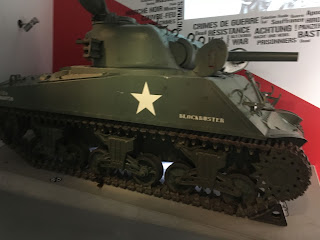Tonight after a long bike ride, I walked to a laundromat on Jaffa Road, a mile and a half from my hotel. The laundromat had three washers, two dryers and, lucky for me, one other customer who could explain what I needed to do to operate the machines.
That customer, Joshua, told me that I needed four 5-shekel coins for the washer and at least one 5-shekel coin plus 1-shekel coins for the dryer. I went to a store around the corner and got Gatorade and the required coins and started my laundry.
A few minutes later, a couple from Dallas, Tony and Patty, who were on a Church trip had showed up. I told them what they needed for the washer, the dryer and the soap dispenser.
Joshua came back 20 minutes later and started folding his clothes from the dryer. I thanked him again for telling me how the laundry worked and told him about Tony and Patty. We talked about travel. I told him my first travel was with the Army to Germany as a tank commander. Joshua was a tank commander in the Israeli Defense Forces IDF! He was on a Megach 6 tank. He served in the 90s, after the Patton tank I served on was retired from the active-duty IDF.
Israeli Megach 6
He told me he was famous in the IDF, not for being a tank commander but for falling from a helicopter. In 1994 he volunteered to be a MEDEVAC dummy, loaded onto a Huey helicopter on a stretcher and flown to a field hospital on a training exercise. He was loaded on the middle stretcher on the left side of the aircraft, but not strapped in securely. The helicopter took off, banked left 20 meters above the ground and Joshua fell--and bounced. He remembered the fall and bouncing on landing.
The helicopter landed. The other fake patients were unloaded and the doctor ran to what was now his real patient. Joshua had broken ribs and a collarbone and leg fractures, but no head injury. He could remember the whole incident in slow motion--including seeing hundreds of soldiers watching him fall and saying the Israeli version of "Oh Fuck!"
The doctor treated the worst of his injuries on the ground and in Russian-accented Hebrew said, "I am sorry to tell you we must put you back on the helicopter." Joshua made a full recovery.
While we exchanged injury stories, a young woman named Nguyen (sounds like Wen) came in. We told her about the coins she needed. She spoke French so I could tell her in French when she seemed confused about the English explanation.
After Joshua left, I found out Nguyen lives in Paris. She came to Paris from Vietnam as a school girl and went to a school for girls set up by Napoleon in Saint Germain-en-Laye, a beautiful town west of Paris. We talked about how beautiful the towns are west of Paris: Chatou and Rueil-Malmaison along with Saint Germain-en-Laye.
Patty and Tony came back and told me about how they were traveling around Israel visiting kids in hospitals and seeing the sights. Nguyen helped a Chinese couple to get the right coins. I put my bike clothes in a bag and left for dinner.
I can hardly wait to find a laundromat in Latvia!
























